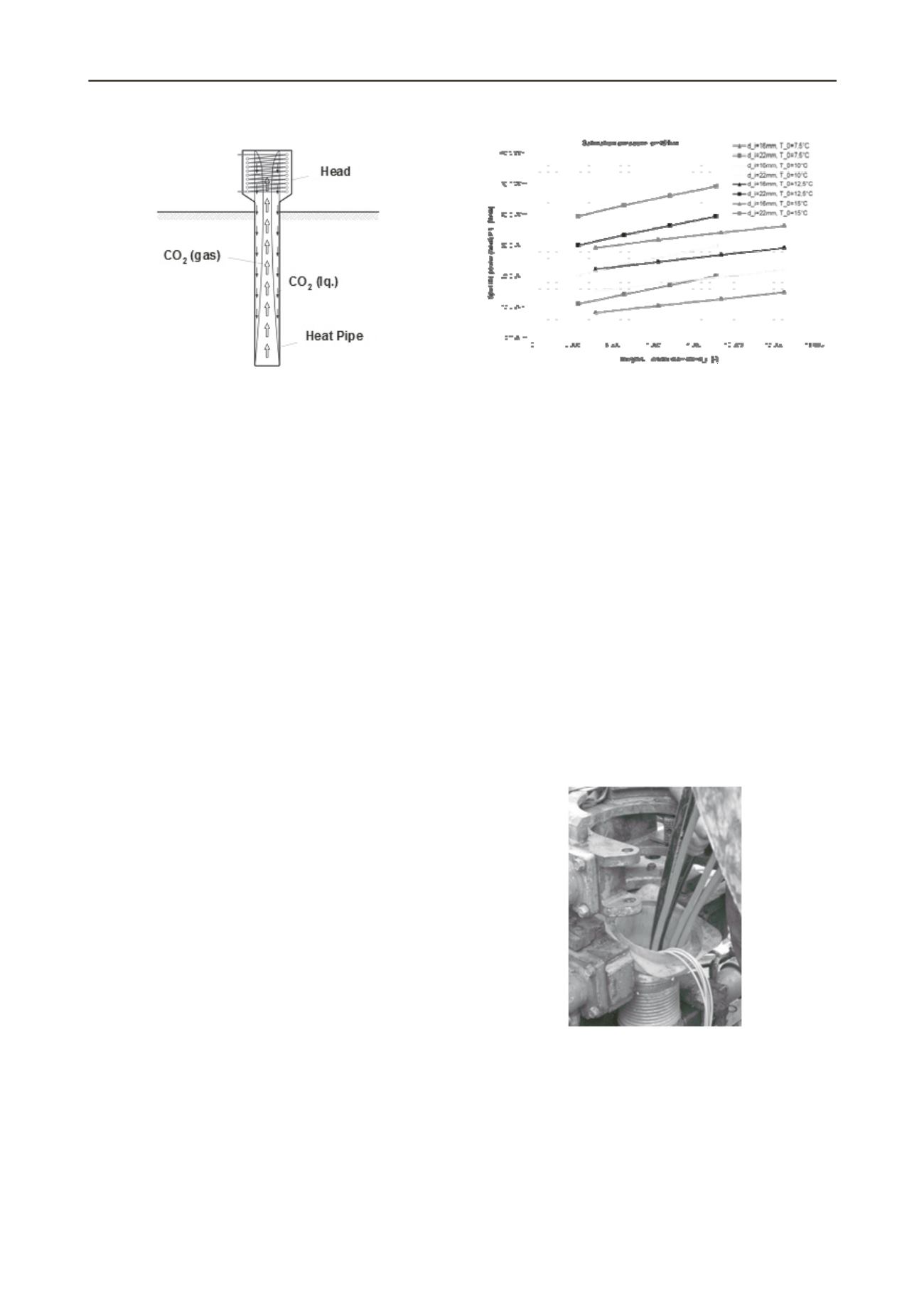
3360
Proceedings of the 18
th
International Conference on Soil Mechanics and Geotechnical Engineering, Paris 2013
Figure 2: Heat Pipe: Geothermal Heat Pipe: Configuration
Furthermore, the temperature distribution within the
borehole heat-exchanger is advancing a high energy withdrawal
rate much more than conventional systems: The overall energy
withdrawal rate is predominantly governed by the temperature
difference between borehole heat-exchanger and ambient
ground temperature, which by itself is limited in terms of its
lower margin. Hence, a heat pipe borehole heat-exchanger is
exploiting the usable temperature more efficient than
conventional borehole heat-exchanger systems.
2 SIMULATION OF GEOTHERMAL HEAT PIPE
OPERATION
The thermal performance of a heat pipe is dependent on a
number of influencing parameters, e.g. driving temperature
difference, mechanical and thermal properties of the heat carrier
fluid – in the present case CO
2
– such as evaporation enthalpy,
heat conductivity and capacity, viscosity, the energy withdrawal
rate on the condenser side, the geometric dimensions and
particularly the inside pressure and the amount of filling
medium respectively, compare to Dunn and Reay (1993) and
Lee and Mital (2003).
Based on a numerical algorithm and accounting for the
conduction-governed energy transport from the soil to the
cylinder and the convection-governed energy mechanism within
the cylinder in vertical direction and considering both surface
evaporation and boiling evaporation, an extensive number of
computations were conducted in order to investigate the
sensitivity to various parameters such as overall length,
diameters of heat pipes and boreholes. The resulting specific
power for a given set of parameters for a constant saturation
pressure is plotted in Figure 3.
The exceptionally efficient energy transport within the heat
pipe and the obsolete circulation pump in comparison to
conventional borehole heat exchangers allow a relative increase
of the coefficient of performance (COP) of up to more than
10°% (percentage).
Figure 3: Simulated heat pipe performance: Energy withdrawal
rate(specific power: heat)
During the operation of such a Two-Phase-Heat Pipe the
thermal transfer resistance in film evaporation or condensation
is significantly smaller in comparison to a system without phase
change. Accordingly, a significantly smaller driving
temperature difference between soil temperature and heat pump
evaporator is necessary to archive the same overall heat flux
density.
The relation between length and diameter has large
influence on the specific power (heat). Accordingly, it is
desirable to optimize this geometric relation during
dimensioning and design.
3 CASE STUDY OF APPLICATION
Within a pilot project, a new-construction one-family home has
been equipped with a ground-coupled heat pump in
combinations with geothermal heat pipe borehole heat
exchangers. These have been instrumented for long term
measurements of ground temperatures and heat pump
parameters(see Figure 4).
Figure 4: Measurement installation
The obtained temperature records (Figure 5) can be used to
investigate the overall performance of the energy supply system
as well as to analyse the operation and to control the
functionality of the installation.


